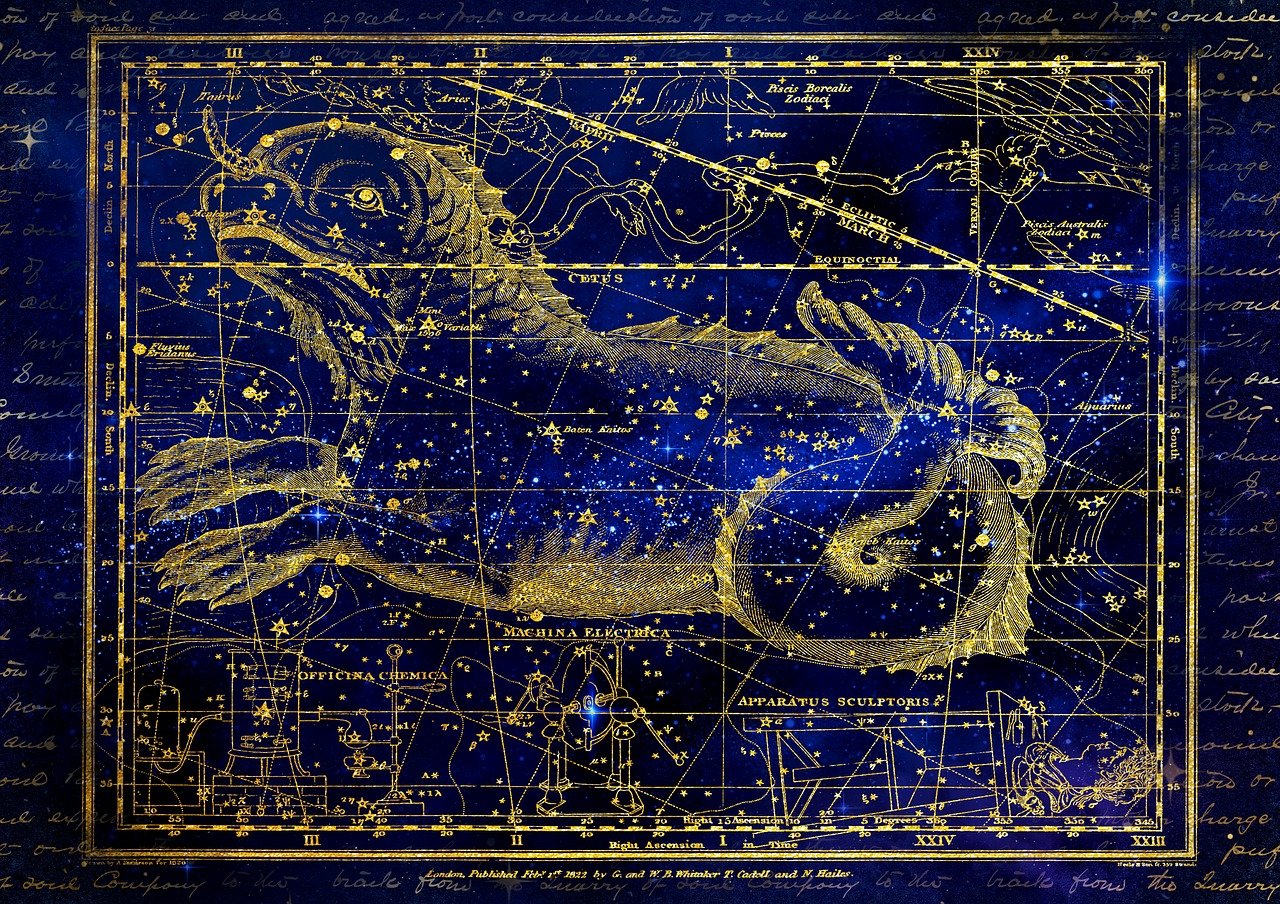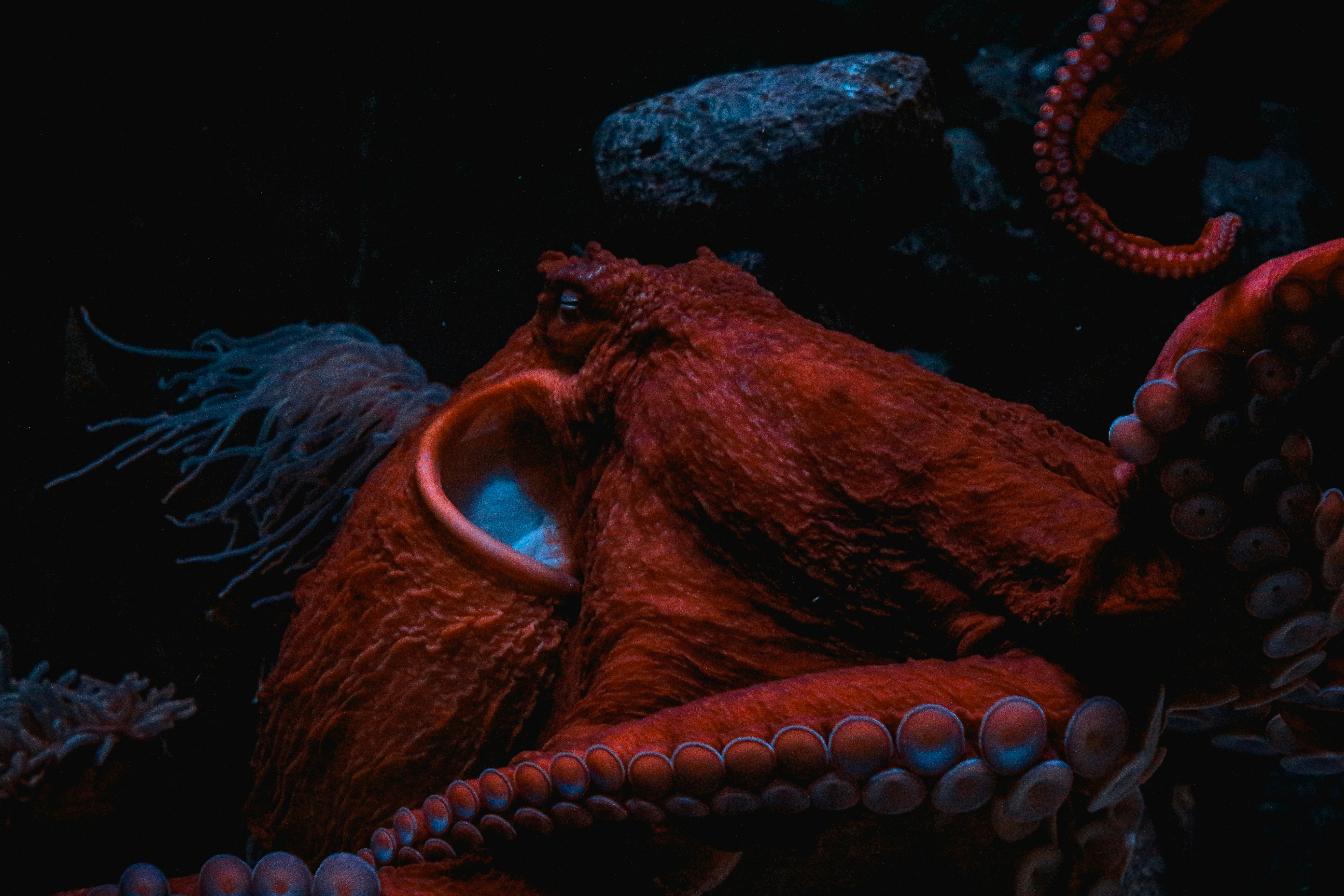Cetus
The constellation under Aries & Pisces
19 May 2024

Cetus, often depicted as a whale-like sea monster in mythology, plays a unique role in astrology, distinct from the traditional zodiac. While not a zodiac sign, there is some debate that the constellation can still influence astrological interpretations due to its specific astronomical position and storied mythological background. An exploration of Cetus requires an understanding of both its historical context and its celestial positioning, revealing the subtle impact it has on astrological insights. This constellation, though not directly positioned on the ecliptic path, still plays a role in astrology by representing the deeper, often turbulent emotional undercurrents that mirror human experiences.
The Mythological Significance of Cetus

In Greek mythology, Cetus is portrayed as a monstrous sea creature central to a dramatic tale involving Poseidon, Andromeda, and Perseus. This narrative begins with Queen Cassiopeia, whose vanity provokes Poseidon to unleash Cetus as divine punishment, setting off a chain of events that lead to Andromeda’s sacrifice. Andromeda is chained to a rock as an offering to appease the wrathful monster but is ultimately saved by Perseus. He uses Medusa's head to petrify Cetus, thus symbolically conquering chaos with heroism.
Some astrologers assert that this narrative, filled with themes of pride, punishment, and redemption, corresponds astrologically to periods where the planets come close to Cetus (in the signs of Aries or Pisces). Cetus can symbolize significant emotional upheavals and the transformative challenges that are often necessary for growth. For those who incorporate Cetus astrologically, it can point to periods when individuals must confront and overcome their innermost fears and shadows, akin to Perseus facing the monstrous Cetus.
Is Cetus a Sign?

Cetus is not recognized as a zodiac sign in traditional Babylonian, Egyptian, and Greek astrology. The only planet to pass through this region of the sky, visible to the ancients, was the Moon. However, this region where the Moon currently passes through Cetus was historically part of Aries. According to the ancients, Aries passed below the ecliptic and included stars in what is now modernly considered Cetus.
The Greeks added Cetus as a constellation over two thousand years ago. During its creation, Cetus sat lower in the sky compared to modern-day classifications of Cetus. The International Astronomical Union (IAU) which is responsible for most of the constellation boundaries we see today, classifies Cetus as sitting higher and now the Moon can pass through it.
Furthermore, within the last hundred years astronomers have discovered other planets and comets such as Pluto and Chiron which were not visible to the ancients. Since these comets and comet-like planets have highly elliptical orbits, they often travel much higher and lower than the ecliptic making their presence seen in constellations such as ancient and modern-day Cetus.
(Chiron does not currently pass through Cetus. However, once every 250 years Pluto will make his long transit through the constellation. No one alive today will have Pluto in Cetus. The last time Pluto was in Cetus was in the mid-1800's.)
There are an extremely small group of individuals who have their Moon in Cetus when using the modern-day IAU boundaries. It's essentially those that have their North Node in Gemini or Cancer, as well as their Moon in Aries according to true sky astrology.
To see if you are one of the lucky few to have your Moon in Cetus you can use our true sky calculator. Cetus is the cluster of stars shaped like an oval under Aries in the calculator's Sky View.
Astronomical Placement and Influence

Located beneath the ecliptic plane, under Aries and Pisces, the large constellation of Cetus spans a vast area of the sky. Many view the period where the Sun is close to Cetus, in Pisces approaching Aries, as a sort of "birth canal" time period, where we move from the end of one zodiacal cycle in Pisces and begin a new one in Aries.
The periods where the Sun (or other planets) come close to Cetus are astrologically associated with times of deep emotional stress and transformation, reflecting the constellation’s deep-water energy. These periods can be marked by intense personal upheavals that demand a reevaluation of one's emotional depths and spiritual directions. The challenges presented during these times are reflective of the mythical confrontations with the sea monster, requiring individuals to face and navigate their darkest waters by overcoming these challenges much like the heroic feats of mythological figures who overcome great beasts.
Exploring Cetus with Modern Tools

Modern astronomical tools such as Stellarium offer valuable insights into the positioning and impact of Cetus on astrological practices. These platforms allow both astrologers and astronomy enthusiasts to explore various historical and contemporary interpretations of constellation boundaries - Babylonian, Egyptian, Greek, and IAU standards. This exploration enhances the understanding of Cetus's interactions with the planets and luminaries as well as visibly illustrating the different astrological boundaries.
Leveraging these modern tools enables a comprehensive view of Cetus's role in the celestial framework and clarifies its influence on astrological interpretations. We recommend you see Cetus for yourself visibly in the sky and use these different Sky Cultures within Stellarium.